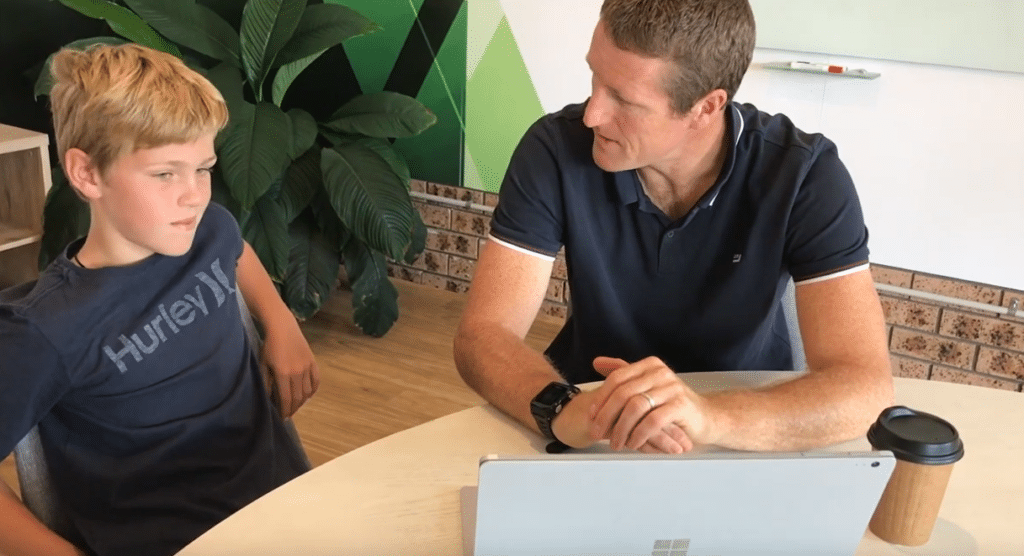
When it comes to raising kids, one of the most impactful lessons you can impart is a healthy relationship with money. For too long, money has been treated as a taboo topic in many households, where financial discussions are avoided or minimised. But here’s the truth: talking openly with your kids about money, savings, investing, and even property from an early age sets them up for long-term success. As I say in my book Sort Your Property Out and Build Your Future, Building good habits early is the foundation of financial freedom.
1. Start the Conversation Early
Kids are sponges, and they’re always observing and absorbing your behavior. Instead of shielding them from money talk, include them in age-appropriate discussions. This could be something as simple as explaining how you budget for groceries, why you save a portion of your income, or even why you give to charity. By normalising these conversations, you can demystify money and give them a sense of confidence in managing it later in life.
When I talk about financial literacy, I emphasise that making smart choices now can pay off for years to come. The earlier you introduce your kids to these concepts, the better equipped they’ll be to make informed decisions later on.
2. Saving and Healthy Spending
One of the best ways to get kids into good financial habits is by teaching them the importance of saving—and knowing how to spend wisely. Encourage them to set aside a portion of their allowance or birthday money into savings. For younger children, this could be as simple as having three jars: one for saving, one for spending, and one for giving to charity.
I advocates for the 80/10/10 rule for kids, a solid framework to introduce kids to early on. It suggests 80% of income goes to savings, 10% to wants, and 10% to be given (charity, mum and dad, etc). While kids don’t have bills to pay, this rule can be adapted to their level: it could be save 50%, set aside 30% for fun spending, and perhaps donate the rest. This not only helps them understand the value of money but also instills a sense of balance between enjoying life and planning for the future.
3. Investing for Their Future
Once your kids understand the basics of saving, it’s time to introduce them to the concept of investing. When we talk about property, shares, or other investments, it’s not just about amassing wealth—it’s about teaching them the power of compounding and delayed gratification. Imagine if, by the time your child is 18, they already know the importance of building wealth through property or long-term investments.
I’m a firm believer in the power of investing in property, and it’s a lesson kids can grasp more easily than you might think. Let them in on the process if you’re buying a home or investment property. Explain what a mortgage is, what equity means, and why property can be a smart long-term asset. Even if they can’t grasp all the details, they’ll start to understand that property is something to be considered as a future goal—a real investment in building wealth.
By the time your kids are teenagers, you can even take it up a notch. Start discussing topics like how property can generate passive income through rental returns, or how compound interest in an investment account can grow their savings. These ideas don’t have to be over-complicated. In fact, simplicity and clarity are key, but the goal is to give them a tangible understanding of how money can work for them.
4. Property: A Tangible Lesson in Wealth-Building
Property is one of the most effective vehicles for wealth creation. The key is to help your kids understand it as an investment, not just a home. Consider taking them to open houses or showing them how real estate appreciates over time. Help them see how buying their first property, even if it’s a modest one, can set them on the path toward financial freedom.
By the time they’re ready to buy, they’ll already be familiar with the process, understand the importance of saving for a deposit, and be more cautious with taking on debt. And, if they’re really ahead of the curve, they might even start looking for ways to leverage their property to build a larger portfolio.
5. Giving Back: Teach Charity as Part of Financial Literacy
Money isn’t just about personal gain; it’s also about giving back. Teaching your kids the importance of charity is a crucial part of creating a well-rounded approach to finances. Whether it’s donating a small portion of their allowance or volunteering time, show them that contributing to the greater good is part of living a financially responsible life.
Wealth without purpose is empty. Giving back grounds us and provides a greater sense of meaning to our financial goals. By introducing your children to the concept of charity, you not only teach them compassion, but also help them see that money is a tool that can be used to create positive change in the world.
6. Build Their Future, One Lesson at a Time
Money doesn’t have to be a taboo subject when raising your kids. In fact, avoiding the topic only leaves them unprepared for the realities of life. By following my advice to normalize conversations around money, saving, investing, property, and giving, you’re giving them the tools they need to build a financially secure and meaningful future.
Helping your kids develop healthy money habits today will serve them for a lifetime. After all, isn’t that the best investment you could make in their future?
Want more to share with your kids? Get your hands on a subscription to my ‘Your Online Property Coach by John Pidgeon‘ and get the whole family involved.
